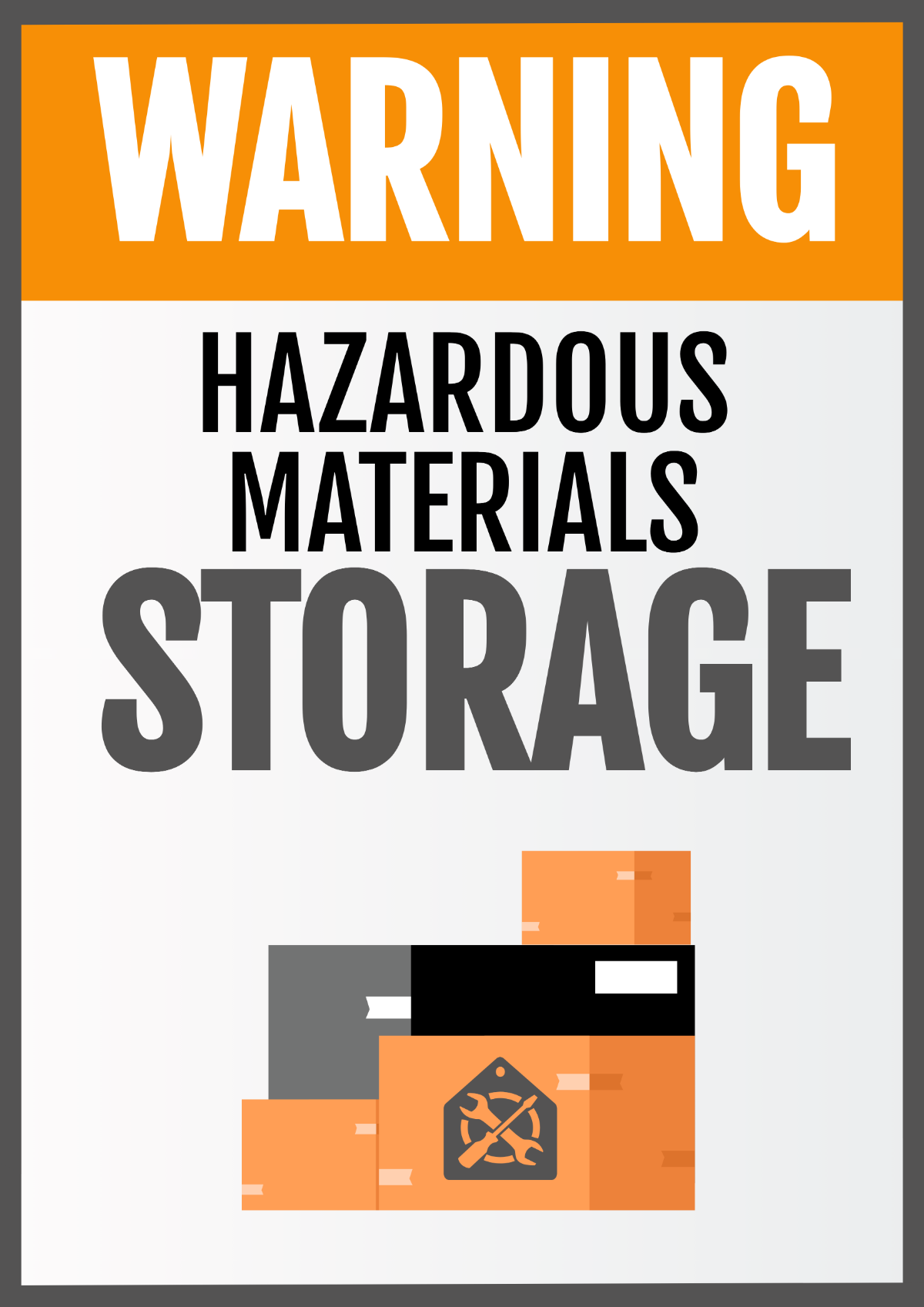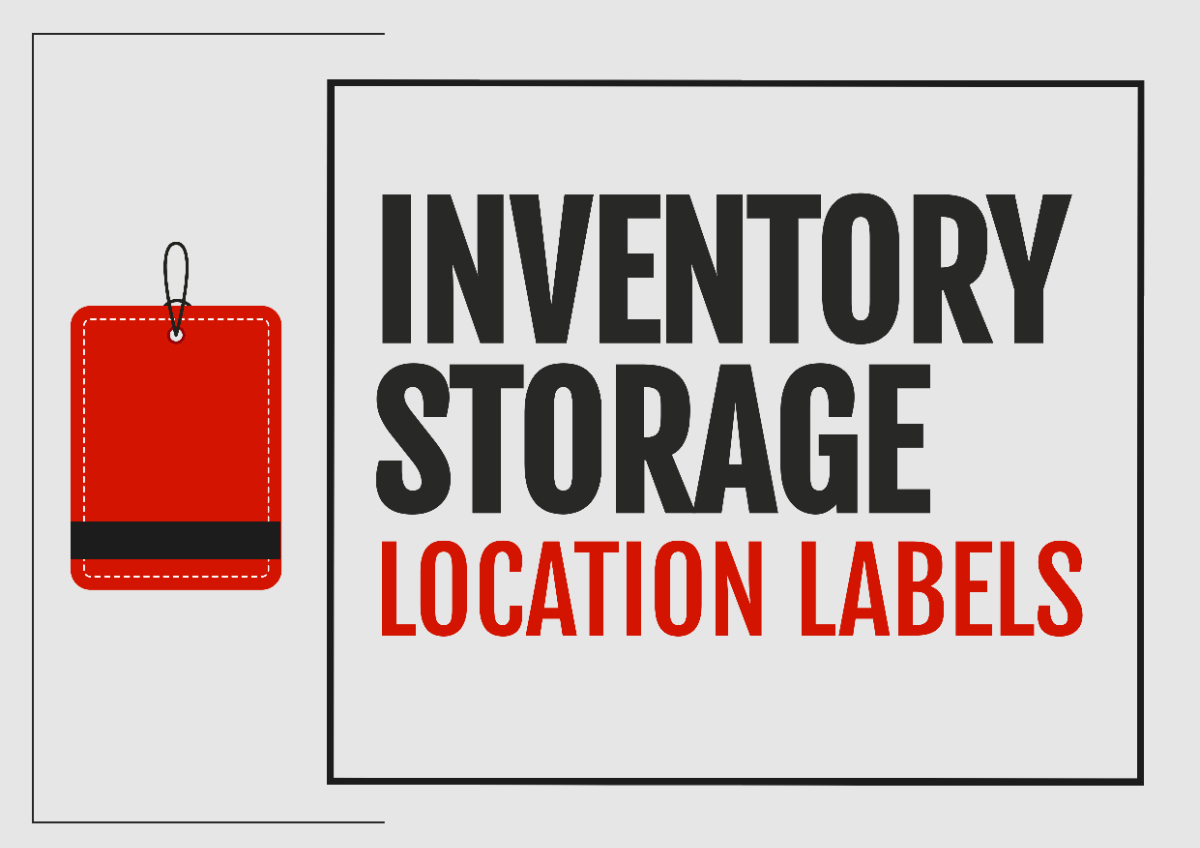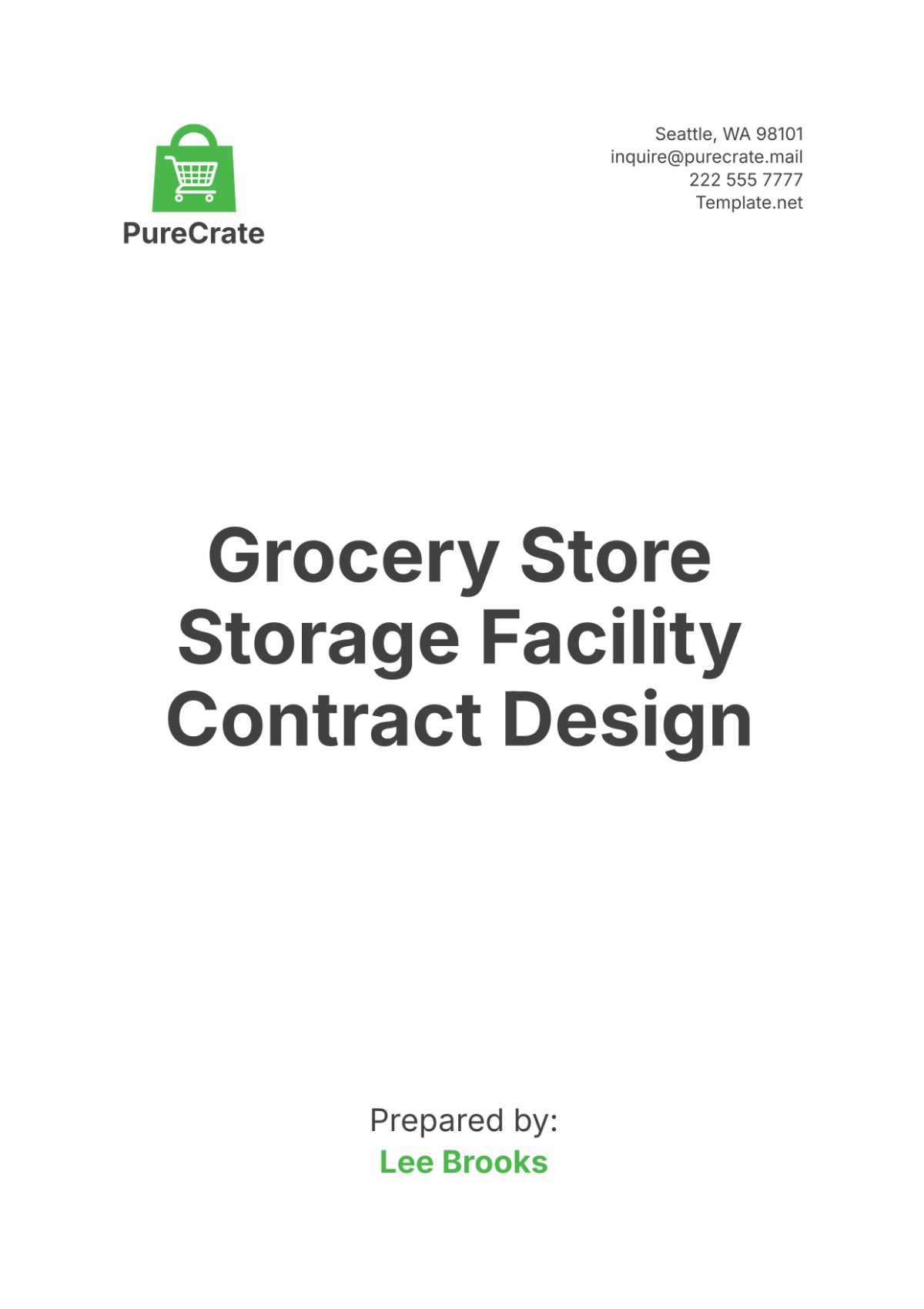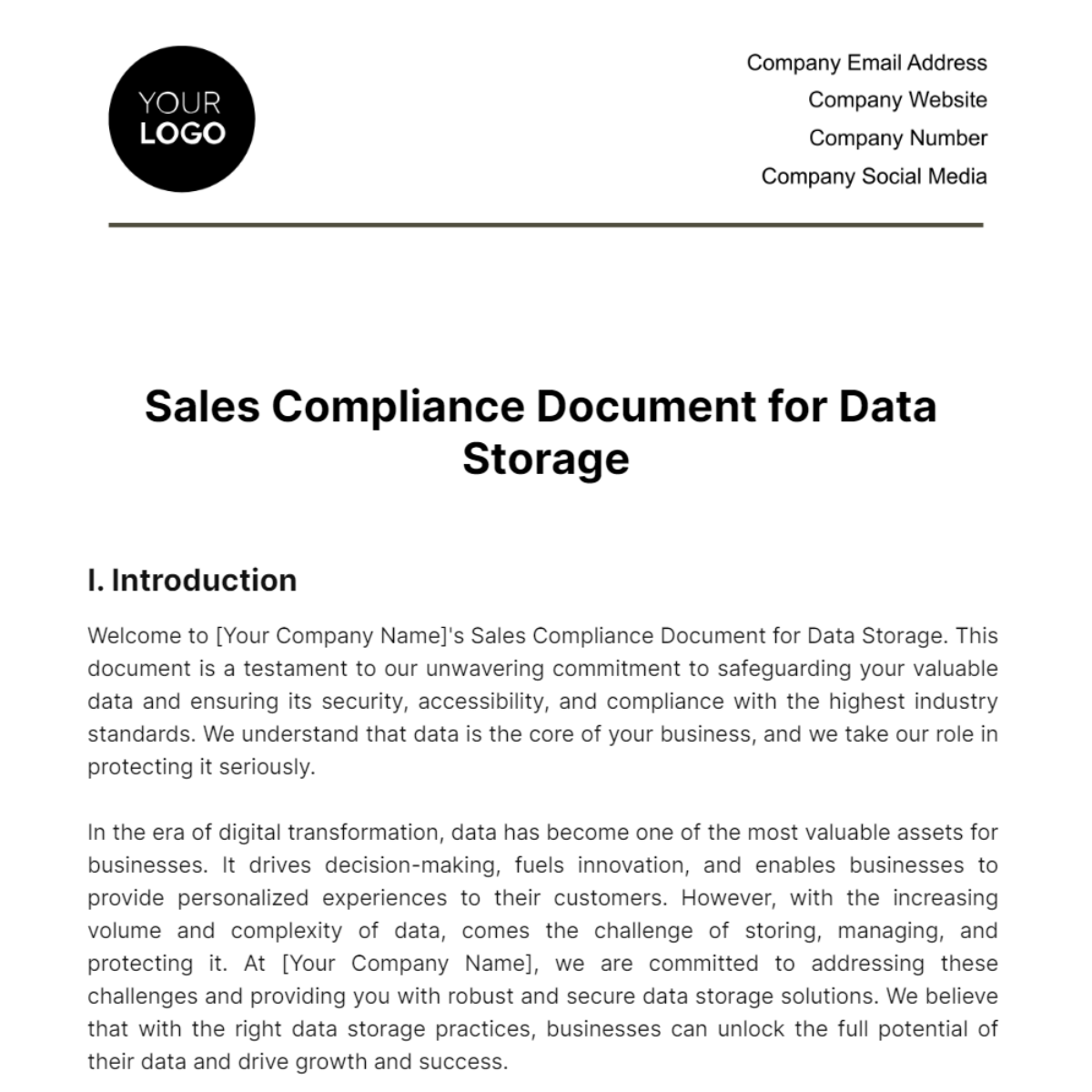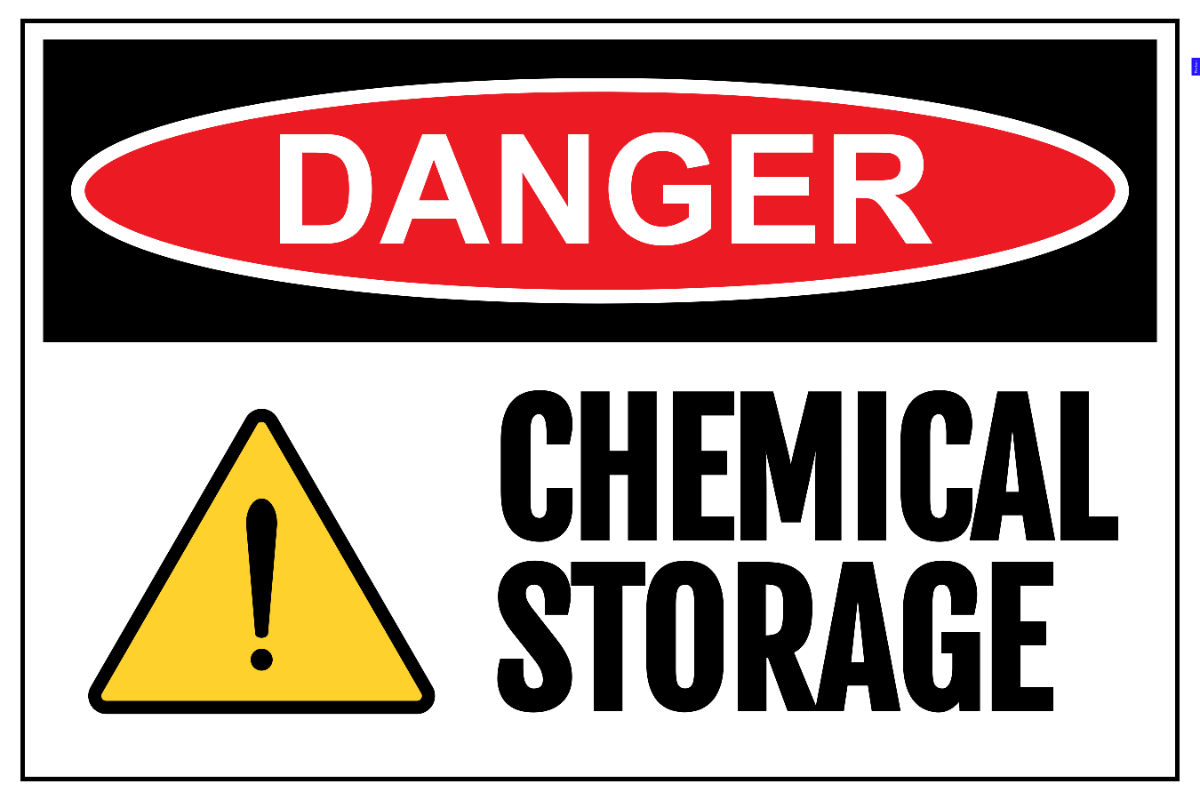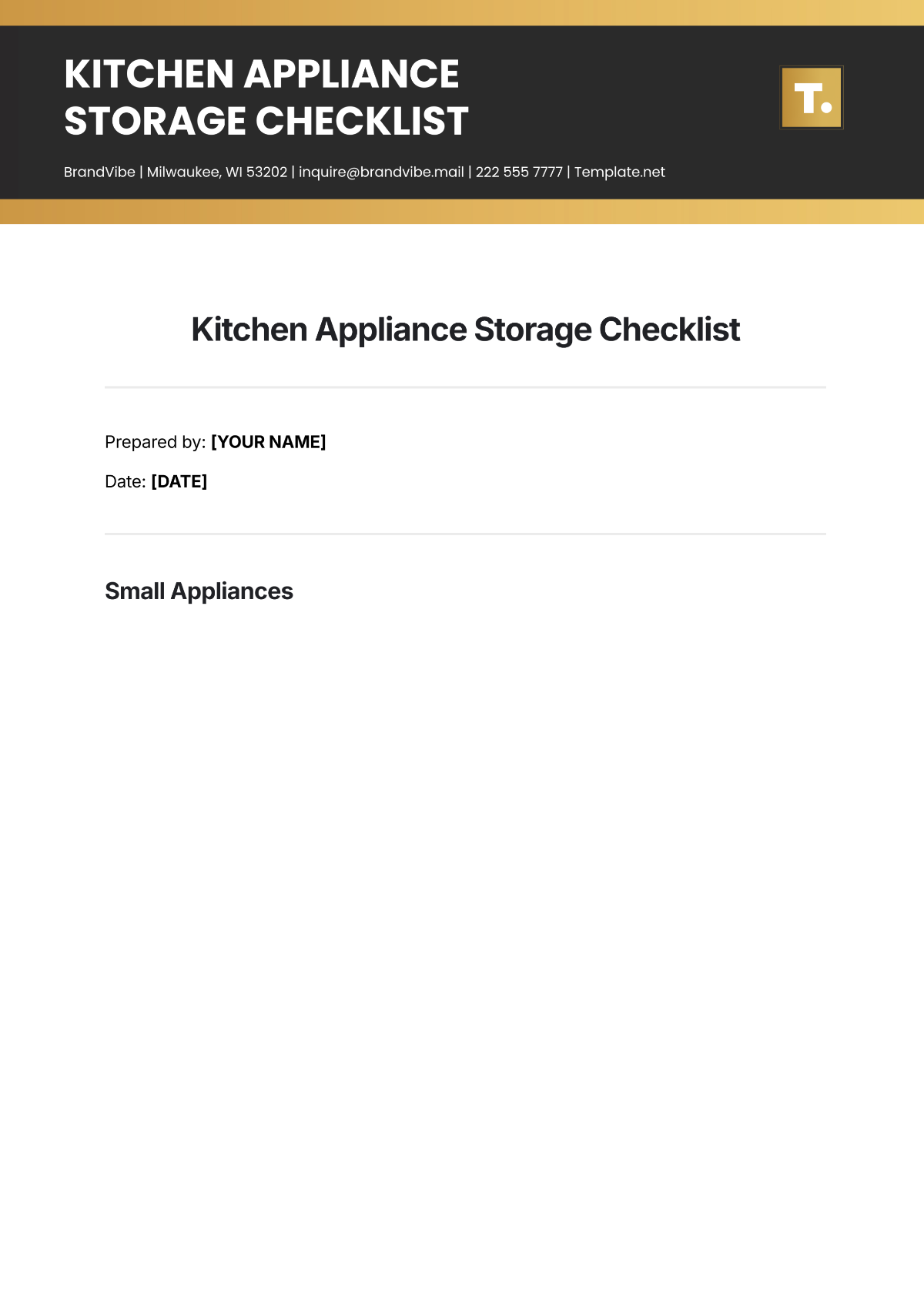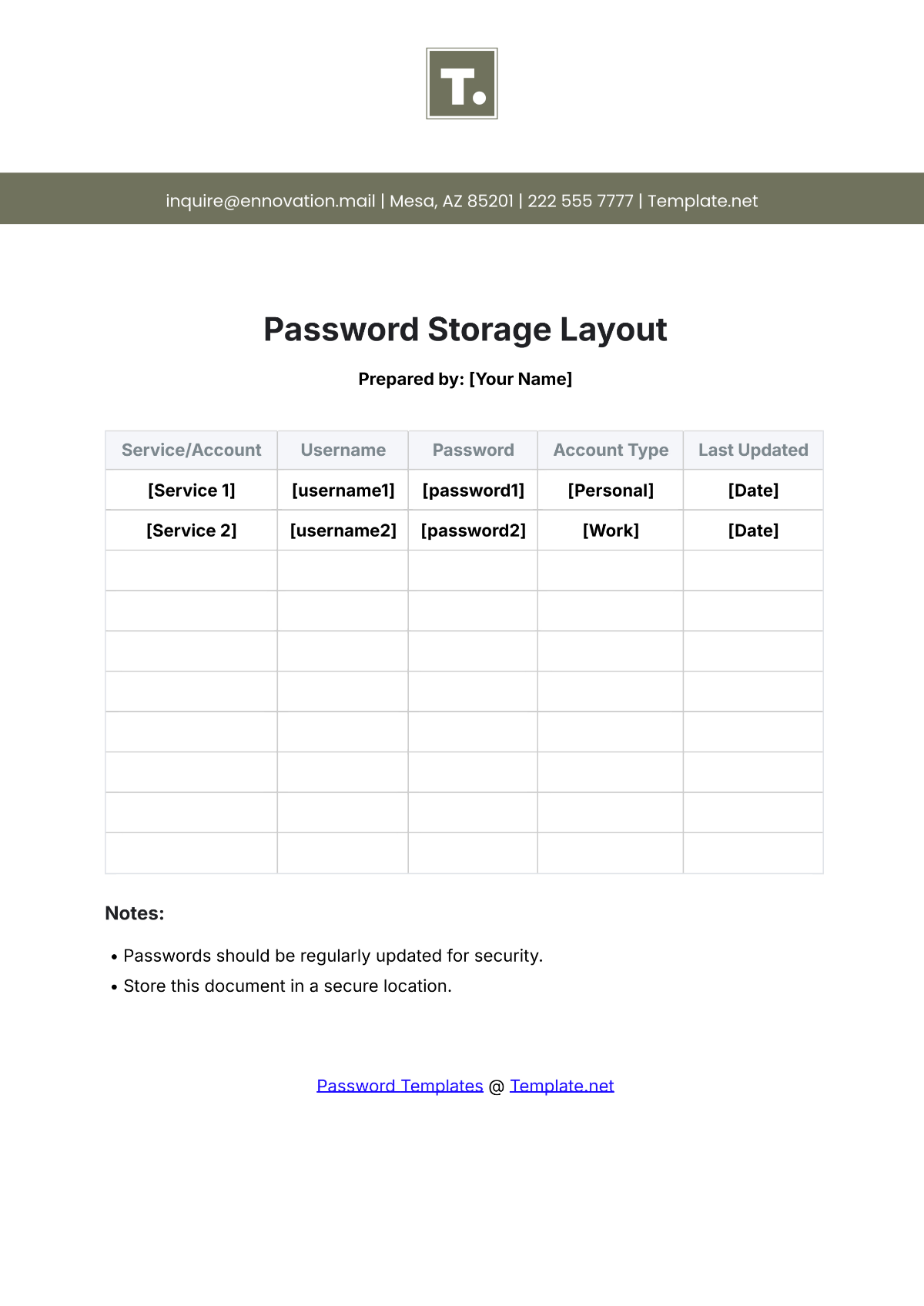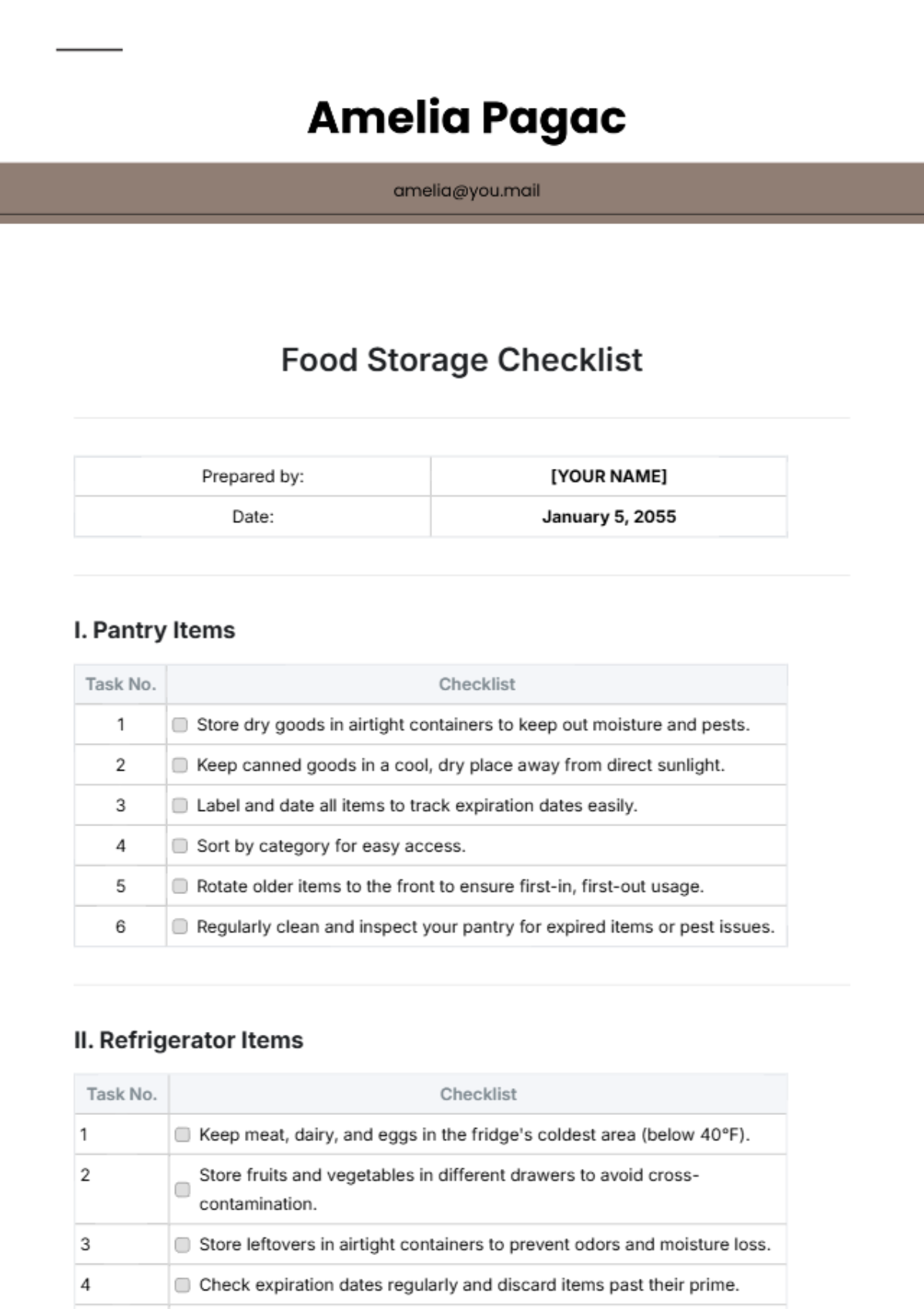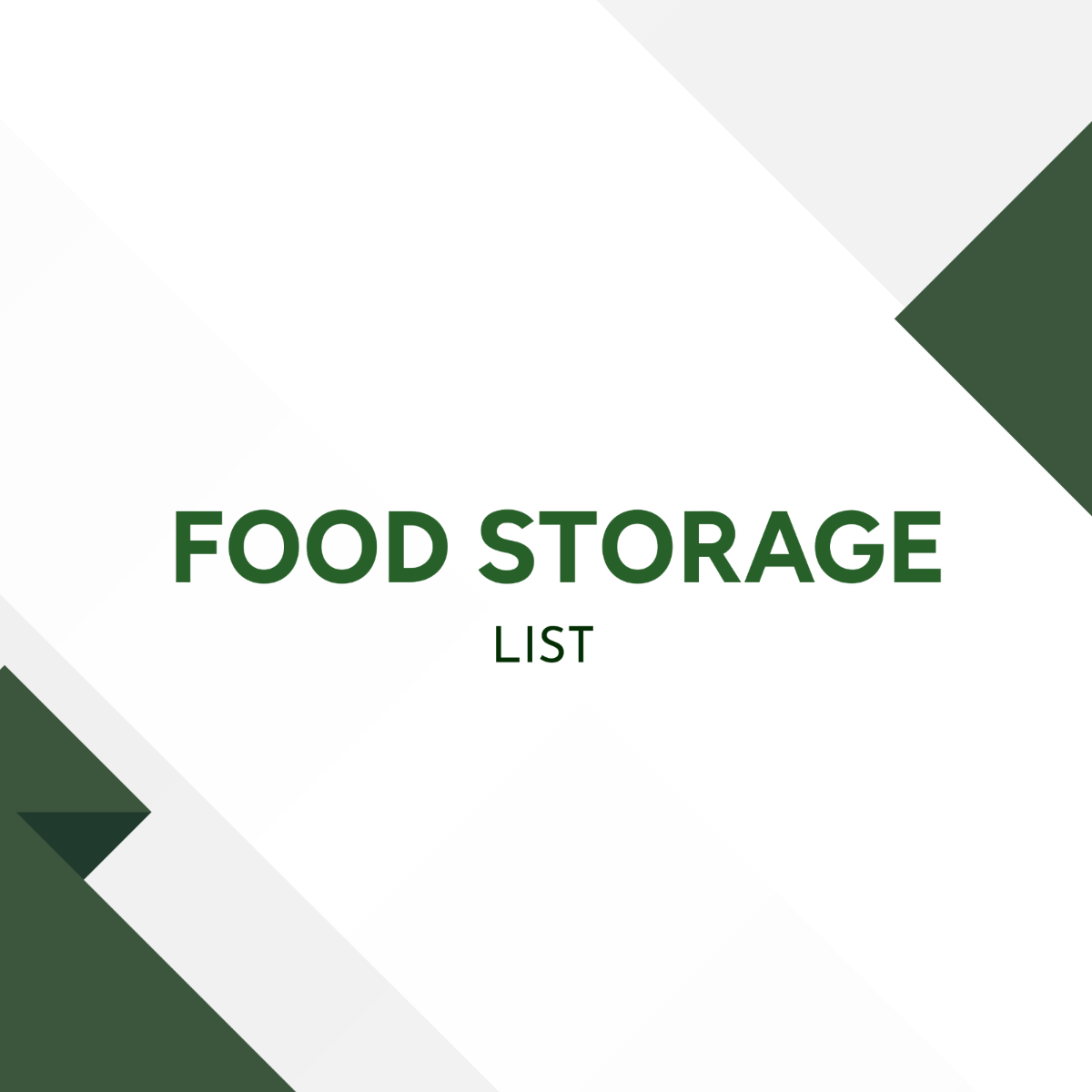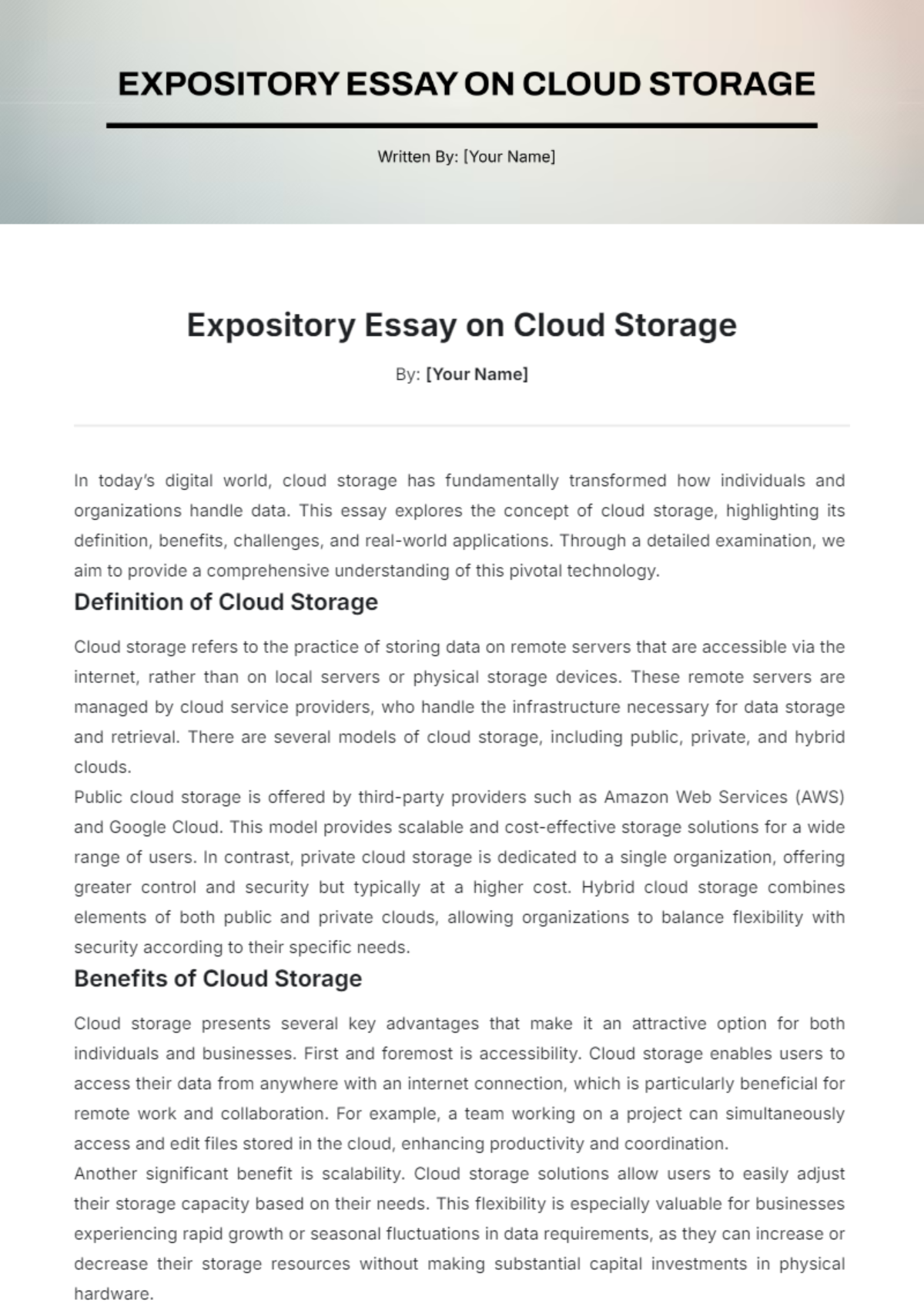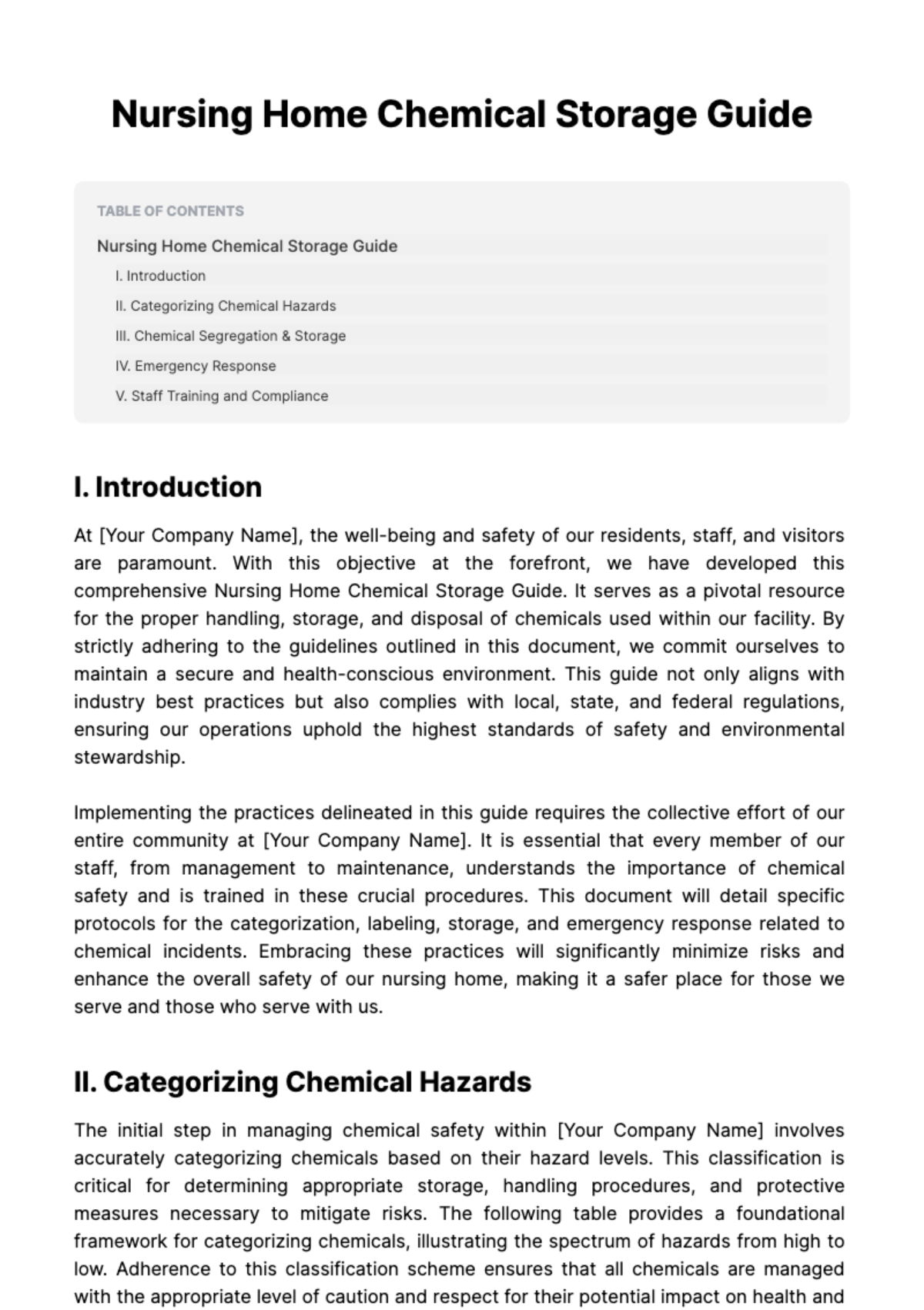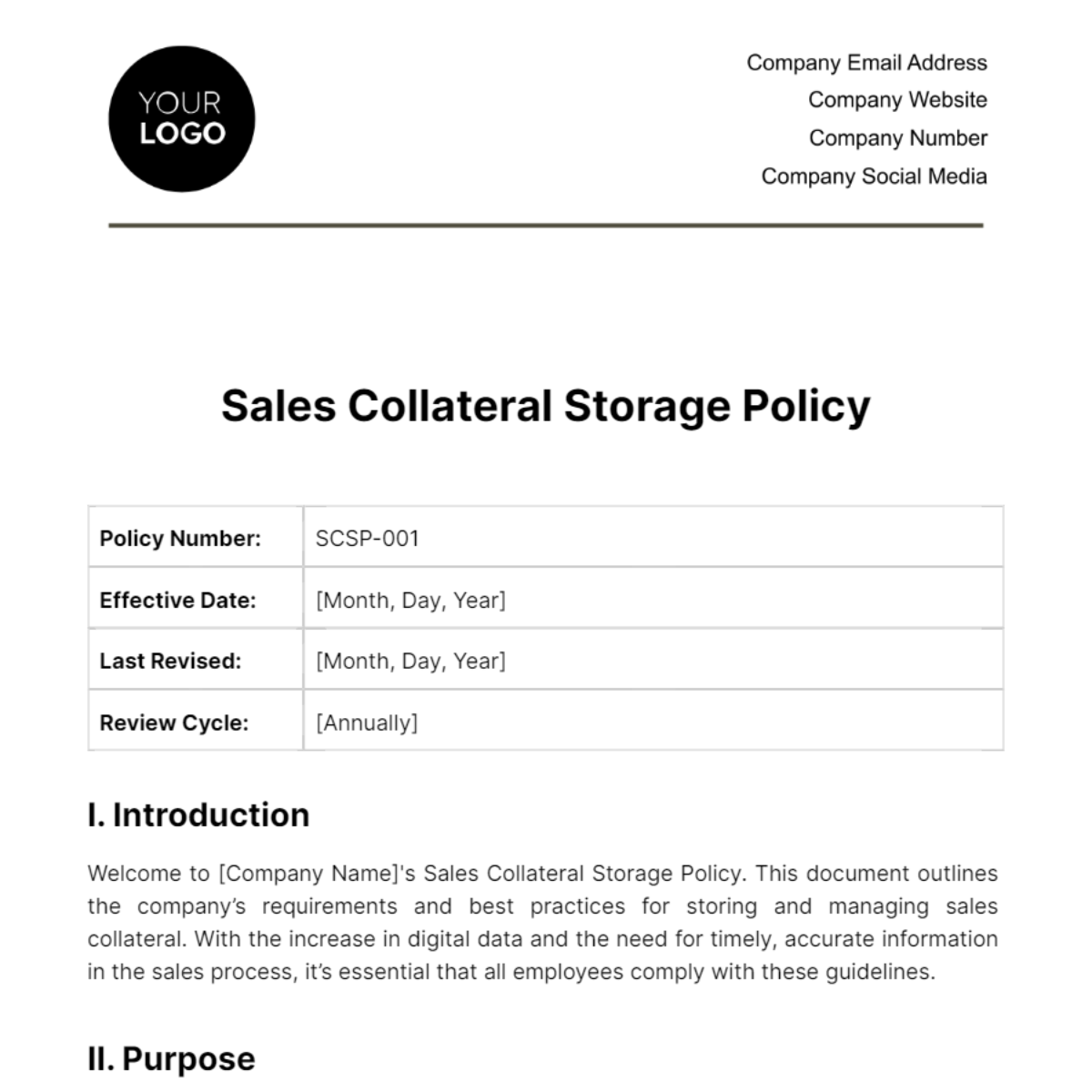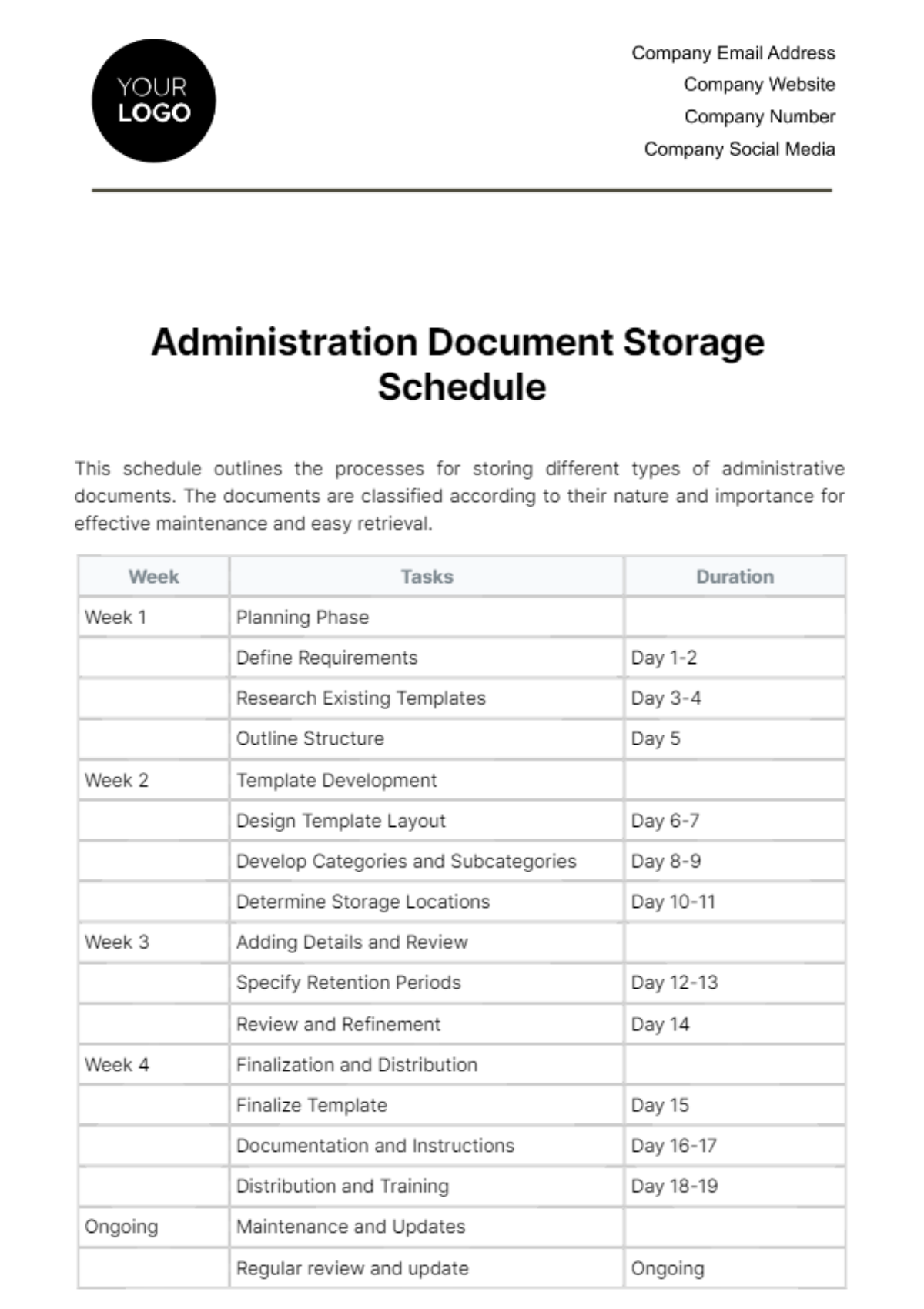Bakery Storage Guideline
I. Introduction
A. Purpose
Quality Maintenance: The primary purpose of this Bakery Storage Guideline is to maintain the quality of bakery products by preventing spoilage and contamination. Proper storage helps retain the flavor, texture, and appearance of bakery items.
Safety Assurance: Ensuring the safety of bakery products by following the storage guidelines minimizes the risk of foodborne illnesses. Safe storage practices protect both customers and staff.
Cost Reduction: Adhering to proper storage practices reduces waste and spoilage, leading to cost savings. Effective storage management contributes to efficient inventory control and reduces financial losses.
B. Scope
Product Coverage: This guideline covers all types of bakery products, including bread, pastries, cakes, and other baked goods. Comprehensive coverage ensures that all items are stored appropriately.
Storage Areas: The scope includes instructions for various storage areas, such as dry storage, refrigerated storage, and frozen storage. Proper storage conditions for different areas are essential for product quality.
Staff Responsibility: All bakery staff members are responsible for adhering to these guidelines to ensure consistency and safety in storage practices. Staff accountability enhances compliance and effectiveness.
II. Storage Requirements
Understanding the specific storage requirements for each type of bakery product is crucial for maintaining quality and safety. The following table outlines the recommended storage conditions for different types of bakery items:
Product Type | Storage Temperature | Humidity Level | Shelf Life |
|---|---|---|---|
Bread | Room Temperature | Low | 3 to 5 days |
Pastries | Refrigerated | Moderate | 2 to 3 days |
Cakes | Refrigerated | Low | 5 to 7 days |
Cookies | Room Temperature | Low | 1 to 2 weeks |
Pies | Refrigerated | Moderate | 3 to 4 days |
A. Bread Storage
Temperature Control: Bread should be stored at room temperature to maintain its texture and prevent staling. Avoid storing bread in the refrigerator, as it accelerates staling.
Humidity Management: Keep bread in a low-humidity environment to prevent mold growth. Use paper or cloth bags to allow air circulation and prevent moisture buildup.
Shelf Life Monitoring: Monitor the shelf life of bread to ensure freshness. Rotate stock regularly to minimize waste and maintain quality.
B. Pastries Storage
Refrigeration: Store pastries in a refrigerated environment to maintain their freshness and prevent spoilage. Proper refrigeration preserves the texture and flavor of pastries.
Humidity Control: Maintain moderate humidity levels to prevent pastries from drying out. Use airtight containers to protect pastries from excess moisture and odors.
Shelf Life Management: Track the shelf life of pastries to ensure they are consumed within the recommended time frame. Implement a first-in, first-out (FIFO) system to minimize waste.
Packaging: Use appropriate packaging materials, such as plastic wrap or airtight containers, to protect pastries during storage. Proper packaging prevents contamination and extends shelf life.
C. Cakes Storage
Refrigeration: Cakes should be stored in a refrigerated environment to maintain their quality and prevent spoilage. Proper refrigeration helps retain the flavor and texture of cakes.
Humidity Control: Maintain low humidity levels to prevent cakes from becoming soggy. Use cake boxes or plastic wrap to protect cakes from excess moisture and odors.
Shelf Life Monitoring: Track the shelf life of cakes to ensure they are consumed within the recommended time frame. Rotate stock regularly to minimize waste and maintain quality.
Decorations: Protect cake decorations, such as frosting and toppings, during storage. Use protective covers or containers to prevent damage and maintain presentation quality.
Handling: Handle cakes with care to avoid damage. Ensure that cakes are stored on flat surfaces to prevent deformities.
D. Cookies Storage
Room Temperature Storage: Store cookies at room temperature to maintain their crispness and flavor. Use airtight containers to preserve freshness and prevent staleness.
Humidity Management: Keep humidity levels low to prevent cookies from becoming soft or soggy. Store cookies in a cool, dry place to maintain their texture.
Shelf Life Monitoring: Monitor the shelf life of cookies and rotate stock regularly. Implement a first-in, first-out (FIFO) system to ensure freshness.
Packaging: Use resealable bags or airtight containers for cookies to maintain their quality. Proper packaging prevents contamination and extends shelf life.
Variety Separation: Store different varieties of cookies separately to prevent flavor transfer. Use separate containers or dividers to maintain distinct flavors.
E. Pies Storage
Refrigeration: Store pies in a refrigerated environment to maintain their freshness and prevent spoilage. Proper refrigeration helps retain the flavor and texture of pies.
Humidity Control: Maintain moderate humidity levels to prevent pies from becoming soggy. Use pie boxes or plastic wrap to protect pies from excess moisture and odors.
Shelf Life Monitoring: Track the shelf life of pies to ensure they are consumed within the recommended time frame. Rotate stock regularly to minimize waste and maintain quality.
Handling: Handle pies with care to avoid damage to the crust and filling. Use pie lifters or spatulas to move pies safely.
Packaging: Use appropriate packaging materials, such as pie boxes or airtight containers, to protect pies during storage. Proper packaging prevents contamination and extends shelf life.
Freezing: For long-term storage, freeze pies in airtight containers or freezer bags. Proper freezing preserves the quality and flavor of pies.
III. Dry Storage Practices
Dry storage is essential for preserving the quality and safety of non-perishable bakery ingredients and products. The following table outlines the key practices for effective dry storage management:
No. | Practice | Description |
|---|---|---|
1 | Temperature Control | Maintain consistent temperature to prevent spoilage. |
2 | Humidity Management | Keep humidity levels low to prevent moisture buildup. |
3 | Organization | Organize items for easy access and efficient stock rotation. |
4 | Pest Control | Implement measures to prevent pest infestations. |
5 | Cleanliness | Maintain cleanliness to ensure food safety and quality. |
A. Temperature Control
Consistent Temperature: Maintain a consistent temperature in the dry storage area to prevent spoilage and maintain product quality. Avoid fluctuations that can compromise the integrity of ingredients.
Thermometer Monitoring: Use a thermometer to monitor the temperature regularly and ensure it remains within the recommended range. Regular monitoring enhances temperature control and accuracy.
Ventilation: Ensure proper ventilation in the storage area to prevent temperature buildup and ensure air circulation. Ventilation supports consistent temperature and reduces the risk of spoilage.
B. Humidity Management
Low Humidity Levels: Keep humidity levels low to prevent moisture buildup and preserve the quality of dry ingredients. Moisture can lead to spoilage and degradation of product quality.
Dehumidifiers: Use dehumidifiers to control humidity levels in the storage area. Dehumidifiers are effective in maintaining low humidity and preventing moisture-related issues.
Monitoring: Regularly monitor humidity levels using a hygrometer to ensure they remain within the recommended range. Monitoring supports effective humidity control and management.
C. Organization
Efficient Layout: Organize the storage area with a layout that allows easy access to items and efficient stock rotation. An organized layout enhances efficiency and reduces retrieval time.
Labeling: Label shelves and containers clearly to identify contents and ensure proper stock rotation. Clear labeling prevents confusion and supports inventory management.
Inventory Management: Implement an inventory management system to track stock levels and expiration dates. Effective inventory management minimizes waste and supports efficient operations.
Segregation: Store different categories of items separately to prevent cross-contamination and maintain organization. Segregation supports safe storage practices and enhances efficiency.
D. Pest Control
Preventive Measures: Implement preventive measures to avoid pest infestations in the storage area. Prevention is essential for maintaining a pest-free environment.
Regular Inspections: Conduct regular inspections to identify and address potential pest issues. Inspections support early detection and prompt action.
Sanitation: Maintain cleanliness and sanitation to deter pests and prevent infestations. Proper sanitation practices contribute to pest control and safety.
Barriers: Use physical barriers, such as seals and screens, to prevent pest entry into the storage area. Barriers enhance pest prevention and control.
E. Cleanliness
Regular Cleaning: Implement a regular cleaning schedule to maintain cleanliness and hygiene in the storage area. Regular cleaning prevents contamination and supports food safety.
Spill Management: Address spills and messes promptly to prevent contamination and ensure cleanliness. Proper spill management supports a clean environment and reduces risk.
Waste Disposal: Dispose of waste and expired items regularly to maintain a clean and organized storage area. Proper waste disposal supports cleanliness and safety.
Sanitization: Use sanitizers to clean surfaces and equipment in the storage area. Sanitization supports hygiene and prevents contamination.
Staff Training: Train staff on cleanliness and hygiene practices to ensure compliance with storage guidelines. Staff training enhances effectiveness and consistency.
IV. Refrigerated Storage Practices
Refrigerated storage is vital for maintaining the freshness and safety of perishable bakery products. The following table outlines the key practices for effective refrigerated storage management:
No. | Practice | Description |
|---|---|---|
1 | Temperature Control | Maintain proper temperature to ensure freshness and safety. |
2 | Humidity Management | Control humidity levels to preserve product quality. |
3 | Organization | Arrange items for easy access and stock rotation. |
4 | Cleaning | Keep the storage area clean and sanitary. |
5 | Monitoring | Regularly check storage conditions and product quality. |
6 | Door Management | Ensure doors are closed properly to maintain temperature. |
A. Temperature Control
Proper Temperature: Maintain the proper temperature in the refrigerated storage area to ensure freshness and safety. The recommended temperature range for refrigeration is typically between 34°F and 40°F (1°C and 4°C).
Thermometer Use: Use a thermometer to monitor the temperature regularly and ensure it remains within the recommended range. Accurate temperature monitoring supports effective storage management.
Regular Checks: Conduct regular checks to verify the temperature and ensure it remains consistent. Regular checks enhance accuracy and support quality control.
B. Humidity Management
Humidity Control: Control humidity levels to preserve product quality and prevent moisture buildup. The recommended humidity level for refrigerated storage is typically between 70% and 80%.
Monitoring Tools: Use tools such as hygrometers to monitor humidity levels and ensure they remain within the recommended range. Monitoring supports effective humidity management.
Moisture Prevention: Implement measures to prevent excess moisture and condensation in the storage area. Moisture prevention supports product quality and safety.
C. Organization
Efficient Arrangement: Arrange items in the refrigerated storage area for easy access and efficient stock rotation. An efficient arrangement enhances productivity and reduces retrieval time.
Labeling: Label shelves and containers clearly to identify contents and ensure proper stock rotation. Clear labeling supports organization and inventory management.
Segregation: Store different categories of items separately to prevent cross-contamination and maintain organization. Segregation supports safe storage practices and efficiency.
Inventory System: Implement an inventory system to track stock levels and expiration dates. Effective inventory management minimizes waste and supports operations.
D. Cleaning
Regular Cleaning: Implement a regular cleaning schedule to maintain cleanliness and hygiene in the refrigerated storage area. Regular cleaning prevents contamination and supports food safety.
Spill Management: Address spills and messes promptly to prevent contamination and ensure cleanliness. Proper spill management supports a clean environment and reduces risk.
Sanitization: Use sanitizers to clean surfaces and equipment in the storage area. Sanitization supports hygiene and prevents contamination.
Waste Disposal: Dispose of waste and expired items regularly to maintain a clean and organized storage area. Proper waste disposal supports cleanliness and safety.
E. Monitoring
Condition Checks: Regularly check storage conditions to ensure compliance with guidelines and maintain product quality. Condition checks enhance quality control and safety.
Product Quality: Monitor product quality to identify any issues and take corrective actions as needed. Product quality monitoring supports effective storage management.
Inspection Frequency: Conduct inspections frequently to verify compliance with guidelines and ensure optimal storage conditions. Frequent inspections support quality assurance.
Staff Training: Train staff on monitoring practices to ensure consistency and effectiveness. Staff training enhances compliance and performance.
F. Door Management
Proper Closure: Ensure that doors are closed properly to maintain temperature and prevent energy loss. Proper door management supports efficiency and temperature control.
Frequent Checks: Conduct frequent checks to verify that doors are closed and functioning correctly. Frequent checks enhance compliance and prevent issues.
Seal Inspection: Inspect door seals regularly to ensure they are intact and effective. Seal inspection supports temperature maintenance and energy efficiency.
Maintenance: Perform regular maintenance on doors and seals to ensure optimal performance. Regular maintenance enhances functionality and reliability.
V. Frozen Storage Practices
Frozen storage is crucial for preserving the quality and safety of long-term storage bakery products. The following table outlines the key practices for effective frozen storage management:
No. | Practice | Description |
|---|---|---|
1 | Temperature Control | Maintain consistent freezing temperature for quality preservation. |
2 | Packaging | Use proper packaging to protect products from freezer burn. |
3 | Organization | Arrange items for easy access and stock rotation. |
4 | Cleaning | Keep the storage area clean and sanitary. |
5 | Monitoring | Regularly check storage conditions and product quality. |
6 | Defrosting | Manage defrosting to ensure efficiency and safety. |
A. Temperature Control
Consistent Freezing: Maintain a consistent freezing temperature in the frozen storage area to preserve quality and prevent spoilage. The recommended temperature for freezing is typically 0°F (-18°C) or lower.
Thermometer Use: Use a thermometer to monitor the temperature regularly and ensure it remains within the recommended range. Accurate temperature monitoring supports effective storage management.
Regular Checks: Conduct regular checks to verify the temperature and ensure it remains consistent. Regular checks enhance accuracy and support quality control.
B. Packaging
Proper Packaging: Use proper packaging materials to protect products from freezer burn and preserve quality. Freezer-safe containers and bags are recommended for effective protection.
Labeling: Label packages with the product name, date of freezing, and expiration date for easy identification and stock rotation. Clear labeling supports organization and inventory management.
Vacuum Sealing: Consider vacuum sealing items to remove air and extend shelf life. Vacuum sealing prevents freezer burn and maintains product quality.
Seal Inspection: Inspect seals on packages regularly to ensure they are intact and effective. Seal inspection supports preservation and quality control.
C. Organization
Efficient Arrangement: Arrange items in the frozen storage area for easy access and efficient stock rotation. An efficient arrangement enhances productivity and reduces retrieval time.
Labeling: Label shelves and containers clearly to identify contents and ensure proper stock rotation. Clear labeling supports organization and inventory management.
Segregation: Store different categories of items separately to prevent cross-contamination and maintain organization. Segregation supports safe storage practices and efficiency.
Inventory System: Implement an inventory system to track stock levels and expiration dates. Effective inventory management minimizes waste and supports operations.
D. Cleaning
Regular Cleaning: Implement a regular cleaning schedule to maintain cleanliness and hygiene in the frozen storage area. Regular cleaning prevents contamination and supports food safety.
Spill Management: Address spills and messes promptly to prevent contamination and ensure cleanliness. Proper spill management supports a clean environment and reduces risk.
Sanitization: Use sanitizers to clean surfaces and equipment in the storage area. Sanitization supports hygiene and prevents contamination.
Waste Disposal: Dispose of waste and expired items regularly to maintain a clean and organized storage area. Proper waste disposal supports cleanliness and safety.
E. Monitoring
Condition Checks: Regularly check storage conditions to ensure compliance with guidelines and maintain product quality. Condition checks enhance quality control and safety.
Product Quality: Monitor product quality to identify any issues and take corrective actions as needed. Product quality monitoring supports effective storage management.
Inspection Frequency: Conduct inspections frequently to verify compliance with guidelines and ensure optimal storage conditions. Frequent inspections support quality assurance.
Staff Training: Train staff on monitoring practices to ensure consistency and effectiveness. Staff training enhances compliance and performance.
F. Defrosting
Proper Management: Manage defrosting to ensure efficiency and safety. Regular defrosting prevents ice buildup and maintains optimal storage conditions.
Scheduled Defrosting: Implement a scheduled defrosting routine to maintain efficiency and prevent issues. Scheduled defrosting supports consistency and effectiveness.
Cleaning After Defrosting: Clean the storage area thoroughly after defrosting to remove any moisture and prevent contamination. Proper cleaning enhances hygiene and safety.
Equipment Inspection: Inspect equipment regularly to ensure it is functioning correctly and efficiently. Equipment inspection supports performance and reliability.
VI. Handling and Transport
Proper handling and transport of bakery products are crucial for maintaining quality and safety. The following table outlines the key practices for effective handling and transport management:
No. | Practice | Description |
|---|---|---|
1 | Handling Procedures | Use correct techniques to prevent damage and contamination. |
2 | Transport Conditions | Maintain appropriate conditions during transport. |
3 | Packaging | Use proper packaging to protect products during transport. |
4 | Monitoring | Regularly check conditions and product quality during transport. |
A. Handling Procedures
Correct Techniques: Use correct handling techniques to prevent damage and contamination of bakery products. Proper handling ensures that products remain intact and safe for consumption.
Training: Train staff on proper handling procedures to ensure consistency and effectiveness. Staff training enhances performance and compliance.
Equipment Use: Use appropriate equipment, such as gloves and tongs, to handle bakery products safely. Proper equipment use supports hygiene and safety.
Hygiene Practices: Maintain hygiene practices during handling to prevent contamination. Proper hygiene enhances food safety and quality control.
B. Transport Conditions
Temperature Control: Maintain appropriate temperature conditions during transport to ensure freshness and safety. Temperature control prevents spoilage and maintains product quality.
Humidity Management: Control humidity levels during transport to preserve product quality. Proper humidity management prevents moisture-related issues.
Secure Transport: Secure products during transport to prevent movement and damage. Secure transport supports product integrity and safety.
Inspection: Inspect transport conditions regularly to ensure compliance with guidelines and maintain quality. Regular inspection enhances quality control and performance.
C. Packaging
Protective Packaging: Use protective packaging materials to safeguard products during transport. Packaging prevents damage and contamination.
Labeling: Label packages with product information and handling instructions for easy identification and management. Clear labeling supports organization and compliance.
Packaging Integrity: Ensure that packaging is intact and effective before transport. Packaging integrity supports product preservation and quality.
Reusable Packaging: Consider using reusable packaging to reduce waste and enhance sustainability. Reusable packaging supports environmental responsibility.
D. Monitoring
Condition Checks: Regularly check transport conditions to ensure compliance with guidelines and maintain product quality. Condition checks enhance quality control and safety.
Product Quality: Monitor product quality during transport to identify any issues and take corrective actions as needed. Product quality monitoring supports effective transport management.
Inspection Frequency: Conduct inspections frequently to verify compliance with guidelines and ensure optimal transport conditions. Frequent inspections support quality assurance.
Staff Training: Train staff on monitoring practices to ensure consistency and effectiveness. Staff training enhances compliance and performance.
VII. Inventory Management
Effective inventory management is crucial for maintaining the quality and safety of bakery products. The following table outlines the key practices for effective inventory management:
No. | Practice | Description |
|---|---|---|
1 | Stock Rotation | Implement efficient stock rotation to minimize waste. |
2 | Inventory Tracking | Use inventory tracking systems to manage stock levels. |
3 | Expiration Monitoring | Monitor expiration dates to ensure product freshness. |
4 | Waste Reduction | Implement waste reduction strategies to enhance efficiency. |
A. Stock Rotation
First-In, First-Out (FIFO): Implement the FIFO method to ensure that older products are used before newer ones. FIFO minimizes waste and supports freshness.
Labeling: Label products with production and expiration dates to facilitate stock rotation. Clear labeling supports organization and compliance.
Regular Checks: Conduct regular checks to verify stock rotation and ensure compliance with guidelines. Regular checks enhance efficiency and effectiveness.
Staff Training: Train staff on stock rotation practices to ensure consistency and effectiveness. Staff training enhances performance and compliance.
B. Inventory Tracking
Tracking Systems: Use inventory tracking systems to manage stock levels and expiration dates. Tracking systems enhance efficiency and support effective management.
Data Accuracy: Ensure that inventory data is accurate and up-to-date to facilitate decision-making and operations. Data accuracy supports effective management and performance.
Regular Audits: Conduct regular audits to verify inventory levels and ensure compliance with guidelines. Regular audits enhance accuracy and efficiency.
Reporting: Generate reports on inventory levels and trends to support decision-making and operations. Reporting supports effective management and strategy development.
C. Expiration Monitoring
Date Monitoring: Monitor expiration dates regularly to ensure product freshness and compliance with guidelines. Date monitoring supports quality control and safety.
Expiration Alerts: Set up alerts to notify staff of approaching expiration dates. Alerts enhance efficiency and support effective management.
Rotation Compliance: Ensure compliance with expiration monitoring practices to maintain product freshness and quality. Rotation compliance supports effective management and performance.
Staff Training: Train staff on expiration monitoring practices to ensure consistency and effectiveness. Staff training enhances compliance and performance.
D. Waste Reduction
Reduction Strategies: Implement waste reduction strategies to enhance efficiency and sustainability. Waste reduction supports environmental responsibility and cost savings.
Reuse and Recycling: Consider options for reusing or recycling products and packaging materials. Reuse and recycling support sustainability and waste reduction.
Regular Assessments: Conduct regular assessments to identify waste reduction opportunities and strategies. Assessments enhance efficiency and effectiveness.
Staff Training: Train staff on waste reduction practices to ensure consistency and effectiveness. Staff training enhances compliance and performance.
VIII. Quality Control
Quality control is vital for maintaining the quality and safety of bakery products. The following table outlines the key practices for effective quality control management:
No. | Practice | Description |
|---|---|---|
1 | Inspection | Conduct regular inspections to ensure compliance with guidelines. |
2 | Testing | Implement testing procedures to verify product quality. |
3 | Documentation | Maintain accurate records of quality control activities. |
4 | Continuous Improvement | Pursue continuous improvement to enhance quality control. |
A. Inspection
Regular Inspections: Conduct regular inspections to verify compliance with quality control guidelines and maintain product quality. Regular inspections enhance quality assurance and effectiveness.
Checklist Use: Use checklists to ensure consistency and thoroughness during inspections. Checklists support compliance and performance.
Documentation: Document inspection findings to facilitate decision-making and operations. Documentation enhances accuracy and efficiency.
Corrective Actions: Implement corrective actions promptly to address any issues identified during inspections. Corrective actions support quality control and improvement.
B. Testing
Testing Procedures: Implement testing procedures to verify product quality and ensure compliance with guidelines. Testing supports quality assurance and effectiveness.
Regular Testing: Conduct regular testing to identify any issues and take corrective actions as needed. Regular testing enhances quality control and performance.
Data Analysis: Analyze testing data to identify trends and opportunities for improvement. Data analysis supports decision-making and strategy development.
Staff Training: Train staff on testing procedures to ensure consistency and effectiveness. Staff training enhances compliance and performance.
C. Documentation
Accurate Records: Maintain accurate records of quality control activities to facilitate decision-making and operations. Accurate records support compliance and effectiveness.
Document Retention: Retain quality control documents for a specified period to support traceability and accountability. Document retention enhances compliance and performance.
Report Generation: Generate reports on quality control activities and trends to support decision-making and strategy development. Reporting supports effective management and operations.
Staff Training: Train staff on documentation practices to ensure consistency and accuracy. Staff training enhances compliance and performance.
D. Continuous Improvement
Improvement Strategies: Pursue continuous improvement strategies to enhance quality control and effectiveness. Continuous improvement supports excellence and innovation.
Regular Reviews: Conduct regular reviews of quality control practices to identify opportunities for improvement. Regular reviews enhance efficiency and effectiveness.
Feedback Mechanisms: Implement feedback mechanisms to gather input from staff and stakeholders. Feedback supports improvement and decision-making.
Staff Training: Train staff on continuous improvement practices to ensure consistency and effectiveness. Staff training enhances compliance and performance.
IX. Best Practices
A. Training
Regular Training: Provide regular training to staff on storage guidelines and practices to ensure consistency and effectiveness. Regular training enhances compliance and performance.
Training Resources: Use training resources, such as manuals and videos, to support staff learning and development. Training resources enhance effectiveness and efficiency.
Knowledge Sharing: Encourage knowledge sharing among staff to promote learning and improvement. Knowledge sharing supports collaboration and innovation.
Feedback Mechanisms: Implement feedback mechanisms to gather input from staff on training effectiveness. Feedback supports improvement and decision-making.
B. Communication
Open Communication: Foster open communication among staff to ensure compliance with guidelines and support effective operations. Open communication enhances collaboration and performance.
Information Sharing: Share information and updates regularly to keep staff informed and engaged. Information sharing supports transparency and efficiency.
Feedback Channels: Implement feedback channels to gather input from staff and stakeholders. Feedback supports improvement and decision-making.
Team Meetings: Conduct regular team meetings to discuss progress and address any issues. Team meetings enhance collaboration and effectiveness.
C. Safety
Safety Prioritization: Prioritize safety in all storage and handling practices to protect staff and products. Safety prioritization enhances compliance and effectiveness.
Safety Training: Provide regular safety training to staff to ensure consistency and effectiveness. Safety training enhances performance and compliance.
Safety Equipment: Use appropriate safety equipment to protect staff and products during storage and handling. Safety equipment supports safety and efficiency.
Safety Inspections: Conduct regular safety inspections to verify compliance with guidelines and maintain safety. Safety inspections enhance quality assurance and performance.
D. Innovation
Innovation Encouragement: Encourage innovation to enhance efficiency and quality in storage and handling practices. Innovation supports excellence and improvement.
Innovation Resources: Use resources, such as workshops and seminars, to support innovation and creativity. Innovation resources enhance effectiveness and efficiency.
Innovation Recognition: Recognize and reward innovative ideas and practices to promote improvement and excellence. Innovation recognition supports motivation and performance.
Feedback Mechanisms: Implement feedback mechanisms to gather input from staff on innovation opportunities. Feedback supports improvement and decision-making.
E. Customer Feedback
Feedback Collection: Gather and analyze customer feedback to support improvement and decision-making. Feedback collection supports quality control and effectiveness.
Feedback Analysis: Analyze feedback data to identify trends and opportunities for improvement. Feedback analysis supports decision-making and strategy development.
Feedback Implementation: Implement changes based on customer feedback to enhance quality and satisfaction. Feedback implementation supports improvement and performance.
Staff Training: Train staff on customer feedback practices to ensure consistency and effectiveness. Staff training enhances compliance and performance.
By following these best practices, we can ensure that our storage and handling processes remain efficient, effective, and aligned with [Your Company Name]'s goals.
